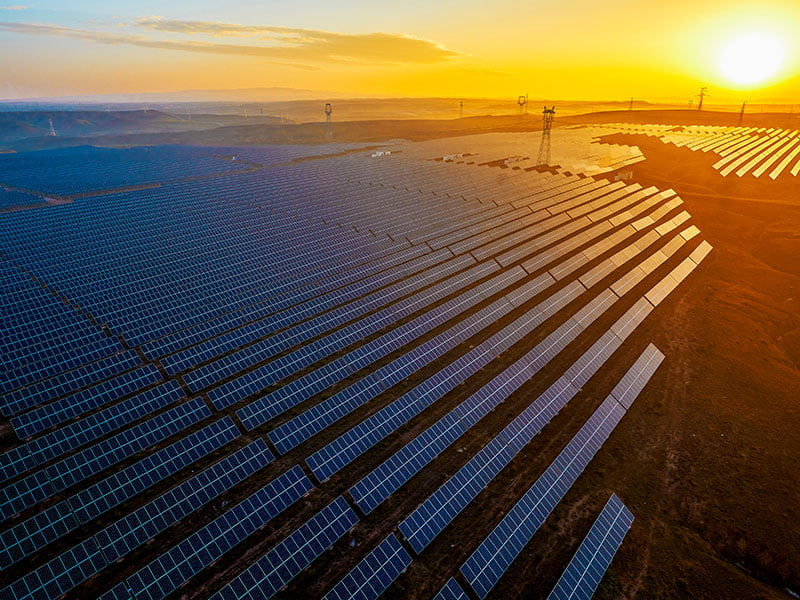Australia has run a more than $7 billion trade deficit on solar panels and associated components over the past five years as the country’s potential for sustainable solar panel manufacturing is inhibited by its predominantly coal-based energy mix.
The findings were published in a special report on Solar Photovoltaic (PV) Global Supply Chains by the International Energy Agency (IEA) on Thursday. The report was prepared with contributions from the CSIRO among other organisations from across the world.
The huge import of PV components has caused Australia’s trade surplus to fall by four per cent between 2017 and 2021. Further, the country ran an average trade deficit for PV-grade polysilicon, wafer, cell and panels of around $7.2 billion.

Australia is also facing a shortage of the skilled workers needed to support its PV industry. The report points to estimates, published by Infrastructure Australia, that one in three solar industry jobs, including electricians and installers, are at risk of being unfilled in 2023.
Infrastructure Australia also estimates that shortages will last until at least 2024 owing to already planned demand exceeding the capacity of Australia’s workforce. The shortage has the the potential to extend out to 2028 as new projects are announced.
Further, the report found that the potential carbon dioxide emissions intensity of large-scale solar PV manufacturing in Australia is high. This is because of the dominance of coal in the national energy mix, 40 per cent according to Geoscience Australia.
In the report, the IEA calculated the hypothetical carbon dioxide emissions intensity if Australia had a fully domestic PV value chain. In this scenario, the emissions intensity of Australian PV manufacturing would be 300kg of CO2/kW, which is greater than the global average of 270kg of CO2/kW.
In 2021, Australia was the third largest producer of zinc and the second largest producer of lead, both materials used in the manufacture of solar PV. If Australia were to have a fully domestic PV supply chain at its current energy mix, it would generate more manufacturing emissions than importing finished solar panels from China.
When looking at all key manufacturing stages of solar panels, Chinese manufacturing accounts for 80 per cent. The report anticipates that “the world will almost completely rely on China for the supply of key building blocks for solar panel production through 2025”.
Given manufacturing capacity under construction, China will soon account for 95 per cent of the world’s production of polysilicon, ingots and wafers. China has invested more than US$50 billion (AU$73 billion) in new PV supply capacity since 2011, more than ten times that in Europe.
Manufacturing costs are also significantly lower in China. It is 10 per cent lower than in India, 20 per cent lower than in the United States, and 35 per cent lower than in Europe. The key to competing with China, according to the IEA, is access to low-cost electricity.
The paper calls for greater diversification of the PV value and supply chain, especially in countries with a lower emissions intensity than China. It specifically cites Norway, Germany, Ethiopia, and Brazil as having potential as a larger share of their energy mixes are derived from low-carbon sources.
IEA executive director Dr Fatih Birol acknowledged the role China has played in driving down the cost of solar panels but warned against persistent supply chain concentration.
“The magic word that we are suggesting to governments around the world, including the Chinese government is diversification. It is suggested that diversification can offer multiple economic and environmental opportunities and as such can reduce supply chain vulnerabilities,” Dr Birol said.
“Even for China. The very fact that [40 per cent of global polysilicon manufacturing is in Xinjiang province] is a vulnerability. There may be a fire, there may be a natural disaster with implications across the world for solar PV penetration in economies.”
Do you know more? Contact James Riley via Email.


“Australia is also facing a shortage of the skilled workers needed to support” ….. everything, just flll in the gap. Is there something that Australia actually HAS skills for? And notice how it’s always “workers” ? Always the underclass. Strange how Australia has no shortage of people who think they can manage what they don’t understand and have no education in. How’s this sound? Australia is also facing a shortage of the skilled managers, because we think managing “workers” who we import is our God-given right rather than getting real skills of our own. “Not made here”, that’s our attitude to skills. Time to break the habit and educate Australians. That’s a “sovereign capability” – Made in Australia – both workers and managers.